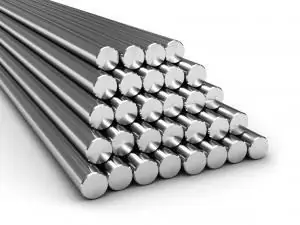2026 Author: Howard Calhoun | [email protected]. Last modified: 2025-01-24 13:10:33
Project 20380 corvette Stoikiy is a new class ship of the Russian Navy (tail number 545) created in development of the Thundering corvette class. It was developed at the Almaz Central Design Bureau, built in 2006-2012, and in the summer of 2014 it became part of the Russian Navy. In addition to it, the B altic Fleet currently has three more corvettes of this project. With its displacement of 2200 tons, the Stoikiy corvette (like other ships of the project) is considered too large for its class according to the NATO classification and belongs more to frigates.

Destination
Project 20380 Project 20380 Corvette is a multipurpose corvette. Such vessels are used for operations in the coastal zone, including a naval blockade, countering enemy submarines and surface ships, as well as for fire support of landing operations. Corvette "Stoykiy" is included in the first batch of ships of this project, built at the "Northern Shipyard" in St. Petersburg and consisting of four ships. The second batch of seven corvettes will be built by the Amur Shipyard in Komsomolsk-on-Amur. The Russian Navy has publicly stated that itintends to purchase at least 30 of these vessels for all four major fleets.

Construction history
The Stoikiy corvette was laid on the slipway of the St. Petersburg Severnaya Verf shipyard in autumn 2006. It was originally expected to be launched in 2011. However, until the end of 2008, the corvette was not actually built due to funding difficulties, and sections of its hull simply stood in the shop for two years.
The situation changed after the inspection of the ship under construction in the fall of 2008 by senior officials of the Government of the Russian Federation and the Commander-in-Chief of the Navy. After nearly four years of construction, the corvette was ceremonially launched at the end of May 2012.
On July 18, 2014, the State Commission in B altiysk signed an act of acceptance/transfer for the new Stoykiy ship, the fourth serial corvette of project 20380. The name of the corvette was inherited from its famous predecessor, the destroyer of the B altic Fleet, which defended Leningrad and Tallinn during the Second World War.
The Stoykiy and Boikiy corvettes, having joined the B altic Fleet in 2014 and 2013, respectively, have already caused concern in the headquarters of the armies of the B altic countries that are part of the aggressive NATO bloc.

General characteristics of project 20380 corvettes design
Corvettes are 105 meters long, 13 meters wide and have a draft of 3.7 meters. Unlike other anti-submarine ships in service with the Russian fleet, the corvettes of this project are distinguished by the following qualities:
- multifunctionality;
- compact;
- smallradar visibility;
- widespread use of automatic systems;
- modularity underlying the architecture.
It is the modularity of the architecture that makes it easy to upgrade the armament of corvettes by installing newer weapon systems while reducing production costs. The life cycle of such a ship, designed for 30 years, will be characterized by a constant and high modernization potential.

Underwater part of the ship's hull
The Corvette "Resistant" has a steel hull with a smooth deck, bow bulb and fundamentally new contours of its underwater part. The combination of the bow bulb (the protruding underwater part of the bow of the ship) and new contours made it possible to achieve a qualitative leap in the issue of increasing the speed of the vessel - at speeds of about 30 knots, the water resistance to the movement of the corvette is reduced by a quarter compared to the traditional hull shape. This made it possible, on the one hand, to reduce the power and weight of the main power plant of the ship, and on the other hand, to free up from 15% to 18% of its displacement for use under additional combat equipment.
The ship's hull has nine watertight rooms. They have a combined bridge and command center.

Corvette superstructure
It is made of composite materials, which are multi-layer flame retardant fiberglass and carbon fiber structural materials. Their application isa sign of the use in the design of the superstructure of the so-called technology of low visibility for radar or ste alth technology. Having the ability to absorb and scatter the energy of the electromagnetic radiation of radars incident on them, these materials reflect too small a signal towards the signal source (radar) to be detected. Therefore, on the radar screen, a ship of impressive size will give a mark corresponding to a small boat or even a boat.
At the stern of the corvette, there is a hangar for the Ka-27 anti-submarine helicopter and a runway, which is an absolute innovation for Russian ships of this displacement. The crew of the Stoyky corvette includes about 100 people, along with a helicopter maintenance team.
Main Power Plant (GEM)
It consists of two diesel-diesel units (DDA), working through summing gearboxes for two propellers. Each DDA consists of two diesel engines 16D49 (one provides forward motion, and the second reverse) and a reversible gear unit. The economic course of the corvette is 14 knots, and the full one is 27 knots. In autonomous navigation, the Stoichiy corvette, a photo of which is shown below, can cover a distance of up to 4,000 nautical miles.

The power plant of the corvette is quiet due to the use of technologies developed on nuclear submarines. Due to this, the ship became inconspicuous not only for radars, but also for passive sonars (noise direction finders).
In addition to the power plant, the corvette's power equipment includesfour diesel generators with a capacity of 630 kVA each to meet the needs of the ship in electricity.
Corvette "Resistant": armament and fire control system
The armament of the corvette is divided according to its purpose into:
- anti-ship (artillery and missile);
- anti-air;
- ASW.
All ship's weapon systems operate under the control of the Sigma combat information system. It collects information from radars and sensors and provides a situational picture of the battle in real time. It also allows the ship to share intelligence information with other naval units in the formation.
Anti-ship weapons are represented by two launchers (PU) of the Uran-U missile system, each of which contains ammunition consisting of four Kh-35 anti-ship cruise missiles with a firing range of 260 km. The Uran-U launchers are located in the middle part of the ship's hull.
The ship's artillery is represented by the A-190 "Universal" universal ship gun mount. The caliber of its guns is 100 mm, the rate of fire (maximum) is 80 rds / min., The ammunition is 332 rounds. Firing range up to 20 km.
The air defense of the ship is provided by the Kortik-M air defense system mounted on the forecastle and two 6-barreled 30-mm Ak-630M gun mounts at the stern.
The corvette is equipped with two four-tube torpedo tubes for launching Rubezh anti-torpedoes, capable of destroying both enemy torpedoes and submarines.
For close combat on the deck of a corvettetwo 14.5 mm machine-gun mounts and two DP-64 grenade launchers were deployed to repel the landing force.
Recommended:
Heat-resistant alloys. Special steels and alloys. Production and use of heat-resistant alloys

Modern industry cannot be imagined without such material as steel. We encounter it at almost every turn. By introducing various chemical elements into its composition, it is possible to significantly improve the mechanical and operational properties
What is the project structure? Organizational structure of the project. Organizational structures of project management

The project structure is an important tool that allows you to divide the entire course of work into separate elements, which will greatly simplify it
What is a technology project? Development of a technological project. Example of a technological project

As part of the article, we will find out what a technological project is, and also work out the issues of its development
Corvette project 20385 "Thundering": specifications and photos. Corvette "Agile"

Project 20385 "Thundering" corvette: description, specifications, purpose, comparison. Corvettes "Thundering" and "Agile": overview, parameters, photos
Corvette "Perfect" (photo). Descent of the corvette into the water

The construction of the corvette "Perfect" lasted for many years, so its launch became one of the most grandiose events in the modern history of the Russian Navy. You can read about its technical features and weapons in this article

